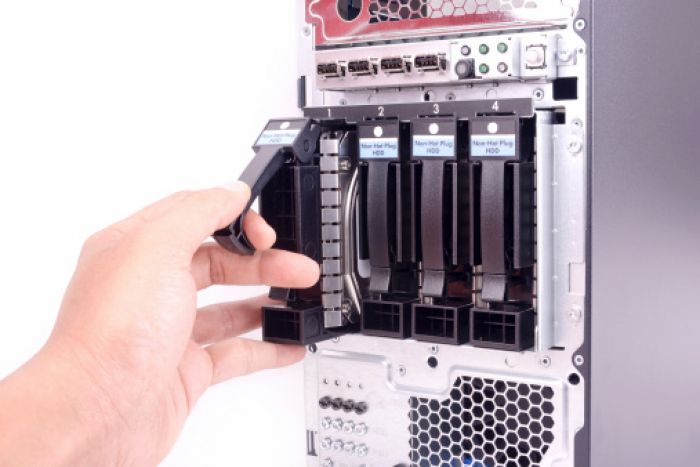RAID Drive Arrays – Symptoms


Today’s complex computing environments house enormous amounts of critical data that must be accessible consistently and efficiently. These systems have continuously become more reliable through advances in software and hardware technology. One significant advancement in data storage has been the introduction of RAID data storage (Redundant Array of Independent Disks). RAID configurations are now commonly implemented by most leading providers of servers and storage systems due to their attributes of high performance, fault tolerance, and cost-effectiveness.
Although RAID systems do provide the benefits needed by businesses of varying sizes, they still of course consist of hardware and software components. Accordingly they are subject to failures common to most complex technical devices. There are four key categories of potential failures, each requiring specific efforts for successful recovery.
RAID Hardware Failure
Mechanical and electronic devices are subject to wear and physical damage. Depending on the failing component or the type of failure recovery procedures can vary greatly. Such hardware failures may include:
- Disk actuator or other hard drive component failure
- Controller failure or malfunction
- Power supply failure or burnout
- Physical damage from lightning, flood, power spikes, overheating or vibration
- Disk media surface damage or contamination
- RAID controller failure or corruption
Human Error
People make mistakes, and there may also be disgruntled employees who would inflict intentional damage, or even system administrators who may inadvertently corrupt the RAID environment.
- Accidentally deleting files or records
- Reformatting of drives, entire arrays, or disk partitions
- Overwriting of databases or files
- Sabotage by hackers or disgruntled employees
- RAID setup or administrator error
- Lost or forgotten passwords that may prevent access
Any of these scenarios may result in the need to recover data or the RAID environment itself.
RAID Software Failure and Application Failures
These categories of failure can also result in the need to execute recovery processes, or to engage expert technical assistance:
RAID Software Failure
- Corrupted or damaged files/folders
- RAID configuration error
- Directory or registry corruption
- Backup failures
- Computer malware and viruses
Application Failures
- Unable to run applications or load files
- Corrupted application or database files
- Deleted tables needed by applications
- Locked databases needed for application access
Solutions for Recovery
Each of these failures can prevent access to critical company data, or even result in catastrophic data loss. Restoring hardware function and even software recovery is one element of getting back to business as usual, but data recovery can be a much more complex issue. There are numerous versions and configurations for RAID storage systems, and each manufacturer also varies in their management and controlling of their systems, making them proprietary in nature. It takes a great deal of technical expertise to determine the proper way to recover from each type of RAID failure. In fact, attempts to recover incorrectly can add to the potential for permanent loss of files and databases.
Service You Can Count On
Data recovery is what we do – the only thing we do. If you have stored data, we can recover it. Our highly-trained specialists have the knowledge and experience to properly evaluate each incident and recover safely and successfully. We do not contract out our recovery services or ship your critical data drives to other locations which can create additional potential for damage or loss. All work is performed in our Irvine, CA offices. Call today for a quick response quote from our RAID server specialists regarding your specific recovery needs.